
The New Energy Strategy for Ukraine Up To 2030
The New Energy Strategy for Ukraine to 2030, which was approved by the Ukrainian Government in spring 2006, estimates that Ukraine will nearly quadruple its use of non-conventional energy sources, which under Ukrainian legislation include renewable and waste energy sources - from 10.9 Mtoe in 2005 to 40.4 Mtoe (Million Tones of Oil Equivalent) in 2030. This initiative would require investing some UAH 60.4 billion (EUR 7.9 billion) into the energy sector. The highest growth is expected in the use of solar energy, wind farms and low-potential heat, although the growth will start from a very low base as currently the installed capacity in this sector (including small hydro power plants) amounts to 0.18 GW. Nevertheless, the total capacity of power plants generating electricity from alternative energy sources (except for biofuel and small hydro plants) is supposed to grow to 2.1 GW in 2030.
The Strategy envisages the development of renewables in accordance with the fundamental principles of the “Green Book: European Strategy for Secure, Competitive and Sustainable Energy”. The Energy Strategy set out a number of incentives to stimulate renewable energy production and use, but most of them have yet to be implemented into the legislation.“Green” Tariffs
In 2009 the Ukrainian parliament adopted a law on subsidized tariffs for electricity produced from non-conventional sources, i.e., green tariffs. The Wholesale Electricity Market of Ukraine has an explicit obligation to purchase all volumes of electricity produced from alternative energy sources at the green tariff.
The green tariff is established by the National Energy Regulation Commission for each generating company and will be effective until 1 January 2030. The green tariff shall differ from one type of an alternative energy source to another.
The green tariff, as established separately for each generator producing electricity from alternative energy sources is denominated in Euros pursuant to the official EUR/UAH exchange rate established by the National Bank of Ukraine as of 1 January 2009 (UAH 10.86 for EUR 1). “Green” Tariff for Solar Energy
According to the Law, “the amount of the green tariff for legal entities that generate the electric power from solar energy shall be established at the level of the retail tariff for consumers of class two voltage as of January 2009 calculated using the tariff factor applied for peak hours (for three-zone tariff classification), multiplied by green tariff factor for the electric power generated from solar energy”.
Generators of electricity from solar energy can benefit from the highest green tariff indexes:4.4 – for electric power facilities mounted (installed) on roofs of buildings, houses and structures, with their installed capacity under 100 kW, as well as for facilities integrated in buildings’ facades regardless of their capacity;4.6 – for electric power facilities mounted (installed) on roofs of buildings, houses and structures, with their installed capacity being over 100 kW;4.8 – for ground installations.
Tariff factor for peak hours is 1.8 as stipulated by National Energy Regulation Commission (Decree # 529 dated 19/07/2005).
Hence, according to the law, solar green tariffs should be calculated as follows:

* - green tariff calculation is for information purposes only. Actual green tariff is established by the National Energy Regulation Commission for each generating company specifically.
However, the “green” tariff incentive is applied provided that:
1. Starting from January 1st 2012 the share of materials, components, works and services of the Ukrainian origin in the project for the construction of “green” power generating facility is not less than thirty per cent, and starting from January 1st 2014 – not less than fifty per cent.
2. Starting from January 1st 2011, the share of materials and components of Ukrainian origin in solar modules that are used in a PV project is not less than thirty per cent.Various sources of funding
Ukrainian State agencies are cooperating and implementing energy saving projects and developing new and renewable sources of energy with foreign organizations such as NEFCO, ADEME, SIDA as well as international organizations such as EBRD, the World Bank, IFC, USTDA, OPIC, etc.
Ukraine has a program of state support for the development of non-traditional and renewable energy sources and small hydro power plants. The target set for renewables is 19% of generation by 2030. Current State budget financing is limited to wind energy only and is not enough to significantly boost the development of the sector. However, the EU has devoted UAH 319 million (EUR 27.7) to support implementation of the Energy Strategy for Ukraine in 2009. In Ukraine, major deals will experience some difficulties with debt financing due to the economic downturn and regardless will require more sophisticated approaches to structuring. International financial institutions are investing increasing amounts in Ukraine. The IFC declared its intention to invest about USD 500 million in 2010 to support implementation of different projects (including those related to the power sector). EBRD approved the allocation of USD 50 million to development of the alternative power sector in Ukraine. The World Bank will dedicate USD 250 million in 2010 for implementation of the power projects in Ukraine.SolarUA Company
Established in 2009, SolarUA aims to become a leading EPC contractor in the Ukrainian photovoltaics market, which designs, manufactures and installs bankable utility scale PV plants. SolarUA offers specialized solutions for the realization of PV farms throughout Ukraine, including:scouting for land;
identifying location specific factors that can affect efficiency;
system design and engineering;
procurement
permissions and authorizations to apply for the green tariff;
installation and testing;
operation, monitoring and maintenance.
In partnership with leading PV developers, we ensure our clients met the legislative requirements as well as CAPEX and power generation expectations to build a sustainable business in Ukraine.
In order to meet a growing demand for solar modules in Ukraine and taking into account the fact that certain provisions of green tariff legislation for PV farms come into force from January 1, 2011, i.e. a requirement for a 30 per cent share of materials and components of local origin in solar modules, SolarUA plans to build and operate the solar module production facility based on c-Si technology. We are interested in developing win-win partnerships with investors, financing institutions, technology companies and other PV market-makers to realize our plans.
For more information, please, visit our website http://www.solarua.com/ or contact us via e-mail info[at]solarua.com.






 The New Energy Strategy for Ukraine Up To 2030
The New Energy Strategy for Ukraine to 2030, which was approved by the Ukrainian Government in spring 2006, estimates that Ukraine will nearly quadruple its use of non-conventional energy sources, which under Ukrainian legislation include renewable and waste energy sources - from 10.9 Mtoe in 2005 to 40.4 Mtoe (Million Tones of Oil Equivalent) in 2030. This initiative would require investing some UAH 60.4 billion (EUR 7.9 billion) into the energy sector. The highest growth is expected in the use of solar energy, wind farms and low-potential heat, although the growth will start from a very low base as currently the installed capacity in this sector (including small hydro power plants) amounts to 0.18 GW. Nevertheless, the total capacity of power plants generating electricity from alternative energy sources (except for biofuel and small hydro plants) is supposed to grow to 2.1 GW in 2030.
The Strategy envisages the development of renewables in accordance with the fundamental principles of the “Green Book: European Strategy for Secure, Competitive and Sustainable Energy”. The Energy Strategy set out a number of incentives to stimulate renewable energy production and use, but most of them have yet to be implemented into the legislation.“Green” Tariffs
In 2009 the Ukrainian parliament adopted a law on subsidized tariffs for electricity produced from non-conventional sources, i.e., green tariffs. The Wholesale Electricity Market of Ukraine has an explicit obligation to purchase all volumes of electricity produced from alternative energy sources at the green tariff.
The green tariff is established by the National Energy Regulation Commission for each generating company and will be effective until 1 January 2030. The green tariff shall differ from one type of an alternative energy source to another.
The green tariff, as established separately for each generator producing electricity from alternative energy sources is denominated in Euros pursuant to the official EUR/UAH exchange rate established by the National Bank of Ukraine as of 1 January 2009 (UAH 10.86 for EUR 1). “Green” Tariff for Solar Energy
According to the Law, “the amount of the green tariff for legal entities that generate the electric power from solar energy shall be established at the level of the retail tariff for consumers of class two voltage as of January 2009 calculated using the tariff factor applied for peak hours (for three-zone tariff classification), multiplied by green tariff factor for the electric power generated from solar energy”.
Generators of electricity from solar energy can benefit from the highest green tariff indexes:4.4 – for electric power facilities mounted (installed) on roofs of buildings, houses and structures, with their installed capacity under 100 kW, as well as for facilities integrated in buildings’ facades regardless of their capacity;4.6 – for electric power facilities mounted (installed) on roofs of buildings, houses and structures, with their installed capacity being over 100 kW;4.8 – for ground installations.
Tariff factor for peak hours is 1.8 as stipulated by National Energy Regulation Commission (Decree # 529 dated 19/07/2005).
Hence, according to the law, solar green tariffs should be calculated as follows:
The New Energy Strategy for Ukraine Up To 2030
The New Energy Strategy for Ukraine to 2030, which was approved by the Ukrainian Government in spring 2006, estimates that Ukraine will nearly quadruple its use of non-conventional energy sources, which under Ukrainian legislation include renewable and waste energy sources - from 10.9 Mtoe in 2005 to 40.4 Mtoe (Million Tones of Oil Equivalent) in 2030. This initiative would require investing some UAH 60.4 billion (EUR 7.9 billion) into the energy sector. The highest growth is expected in the use of solar energy, wind farms and low-potential heat, although the growth will start from a very low base as currently the installed capacity in this sector (including small hydro power plants) amounts to 0.18 GW. Nevertheless, the total capacity of power plants generating electricity from alternative energy sources (except for biofuel and small hydro plants) is supposed to grow to 2.1 GW in 2030.
The Strategy envisages the development of renewables in accordance with the fundamental principles of the “Green Book: European Strategy for Secure, Competitive and Sustainable Energy”. The Energy Strategy set out a number of incentives to stimulate renewable energy production and use, but most of them have yet to be implemented into the legislation.“Green” Tariffs
In 2009 the Ukrainian parliament adopted a law on subsidized tariffs for electricity produced from non-conventional sources, i.e., green tariffs. The Wholesale Electricity Market of Ukraine has an explicit obligation to purchase all volumes of electricity produced from alternative energy sources at the green tariff.
The green tariff is established by the National Energy Regulation Commission for each generating company and will be effective until 1 January 2030. The green tariff shall differ from one type of an alternative energy source to another.
The green tariff, as established separately for each generator producing electricity from alternative energy sources is denominated in Euros pursuant to the official EUR/UAH exchange rate established by the National Bank of Ukraine as of 1 January 2009 (UAH 10.86 for EUR 1). “Green” Tariff for Solar Energy
According to the Law, “the amount of the green tariff for legal entities that generate the electric power from solar energy shall be established at the level of the retail tariff for consumers of class two voltage as of January 2009 calculated using the tariff factor applied for peak hours (for three-zone tariff classification), multiplied by green tariff factor for the electric power generated from solar energy”.
Generators of electricity from solar energy can benefit from the highest green tariff indexes:4.4 – for electric power facilities mounted (installed) on roofs of buildings, houses and structures, with their installed capacity under 100 kW, as well as for facilities integrated in buildings’ facades regardless of their capacity;4.6 – for electric power facilities mounted (installed) on roofs of buildings, houses and structures, with their installed capacity being over 100 kW;4.8 – for ground installations.
Tariff factor for peak hours is 1.8 as stipulated by National Energy Regulation Commission (Decree # 529 dated 19/07/2005).
Hence, according to the law, solar green tariffs should be calculated as follows: * - green tariff calculation is for information purposes only. Actual green tariff is established by the National Energy Regulation Commission for each generating company specifically.
However, the “green” tariff incentive is applied provided that:
1. Starting from January 1st 2012 the share of materials, components, works and services of the Ukrainian origin in the project for the construction of “green” power generating facility is not less than thirty per cent, and starting from January 1st 2014 – not less than fifty per cent.
2. Starting from January 1st 2011, the share of materials and components of Ukrainian origin in solar modules that are used in a PV project is not less than thirty per cent.Various sources of funding
Ukrainian State agencies are cooperating and implementing energy saving projects and developing new and renewable sources of energy with foreign organizations such as NEFCO, ADEME, SIDA as well as international organizations such as EBRD, the World Bank, IFC, USTDA, OPIC, etc.
Ukraine has a program of state support for the development of non-traditional and renewable energy sources and small hydro power plants. The target set for renewables is 19% of generation by 2030. Current State budget financing is limited to wind energy only and is not enough to significantly boost the development of the sector. However, the EU has devoted UAH 319 million (EUR 27.7) to support implementation of the Energy Strategy for Ukraine in 2009. In Ukraine, major deals will experience some difficulties with debt financing due to the economic downturn and regardless will require more sophisticated approaches to structuring. International financial institutions are investing increasing amounts in Ukraine. The IFC declared its intention to invest about USD 500 million in 2010 to support implementation of different projects (including those related to the power sector). EBRD approved the allocation of USD 50 million to development of the alternative power sector in Ukraine. The World Bank will dedicate USD 250 million in 2010 for implementation of the power projects in Ukraine.SolarUA Company
Established in 2009, SolarUA aims to become a leading EPC contractor in the Ukrainian photovoltaics market, which designs, manufactures and installs bankable utility scale PV plants. SolarUA offers specialized solutions for the realization of PV farms throughout Ukraine, including:scouting for land;
identifying location specific factors that can affect efficiency;
system design and engineering;
procurement
permissions and authorizations to apply for the green tariff;
installation and testing;
operation, monitoring and maintenance.
In partnership with leading PV developers, we ensure our clients met the legislative requirements as well as CAPEX and power generation expectations to build a sustainable business in Ukraine.
In order to meet a growing demand for solar modules in Ukraine and taking into account the fact that certain provisions of green tariff legislation for PV farms come into force from January 1, 2011, i.e. a requirement for a 30 per cent share of materials and components of local origin in solar modules, SolarUA plans to build and operate the solar module production facility based on c-Si technology. We are interested in developing win-win partnerships with investors, financing institutions, technology companies and other PV market-makers to realize our plans.
For more information, please, visit our website http://www.solarua.com/ or contact us via e-mail info[at]solarua.com.
* - green tariff calculation is for information purposes only. Actual green tariff is established by the National Energy Regulation Commission for each generating company specifically.
However, the “green” tariff incentive is applied provided that:
1. Starting from January 1st 2012 the share of materials, components, works and services of the Ukrainian origin in the project for the construction of “green” power generating facility is not less than thirty per cent, and starting from January 1st 2014 – not less than fifty per cent.
2. Starting from January 1st 2011, the share of materials and components of Ukrainian origin in solar modules that are used in a PV project is not less than thirty per cent.Various sources of funding
Ukrainian State agencies are cooperating and implementing energy saving projects and developing new and renewable sources of energy with foreign organizations such as NEFCO, ADEME, SIDA as well as international organizations such as EBRD, the World Bank, IFC, USTDA, OPIC, etc.
Ukraine has a program of state support for the development of non-traditional and renewable energy sources and small hydro power plants. The target set for renewables is 19% of generation by 2030. Current State budget financing is limited to wind energy only and is not enough to significantly boost the development of the sector. However, the EU has devoted UAH 319 million (EUR 27.7) to support implementation of the Energy Strategy for Ukraine in 2009. In Ukraine, major deals will experience some difficulties with debt financing due to the economic downturn and regardless will require more sophisticated approaches to structuring. International financial institutions are investing increasing amounts in Ukraine. The IFC declared its intention to invest about USD 500 million in 2010 to support implementation of different projects (including those related to the power sector). EBRD approved the allocation of USD 50 million to development of the alternative power sector in Ukraine. The World Bank will dedicate USD 250 million in 2010 for implementation of the power projects in Ukraine.SolarUA Company
Established in 2009, SolarUA aims to become a leading EPC contractor in the Ukrainian photovoltaics market, which designs, manufactures and installs bankable utility scale PV plants. SolarUA offers specialized solutions for the realization of PV farms throughout Ukraine, including:scouting for land;
identifying location specific factors that can affect efficiency;
system design and engineering;
procurement
permissions and authorizations to apply for the green tariff;
installation and testing;
operation, monitoring and maintenance.
In partnership with leading PV developers, we ensure our clients met the legislative requirements as well as CAPEX and power generation expectations to build a sustainable business in Ukraine.
In order to meet a growing demand for solar modules in Ukraine and taking into account the fact that certain provisions of green tariff legislation for PV farms come into force from January 1, 2011, i.e. a requirement for a 30 per cent share of materials and components of local origin in solar modules, SolarUA plans to build and operate the solar module production facility based on c-Si technology. We are interested in developing win-win partnerships with investors, financing institutions, technology companies and other PV market-makers to realize our plans.
For more information, please, visit our website http://www.solarua.com/ or contact us via e-mail info[at]solarua.com.
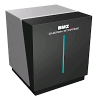
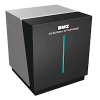
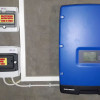

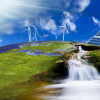
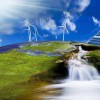

Комментарии (0)